Any time that you can make science hands-on, your students will be usually be much more engaged and retention will be higher. One way to do this is to make models. This post will shares a fun way to make plant cell models using pasta noodles.
Want to see a post about making an edible animal cell (with fruit)? Click here!
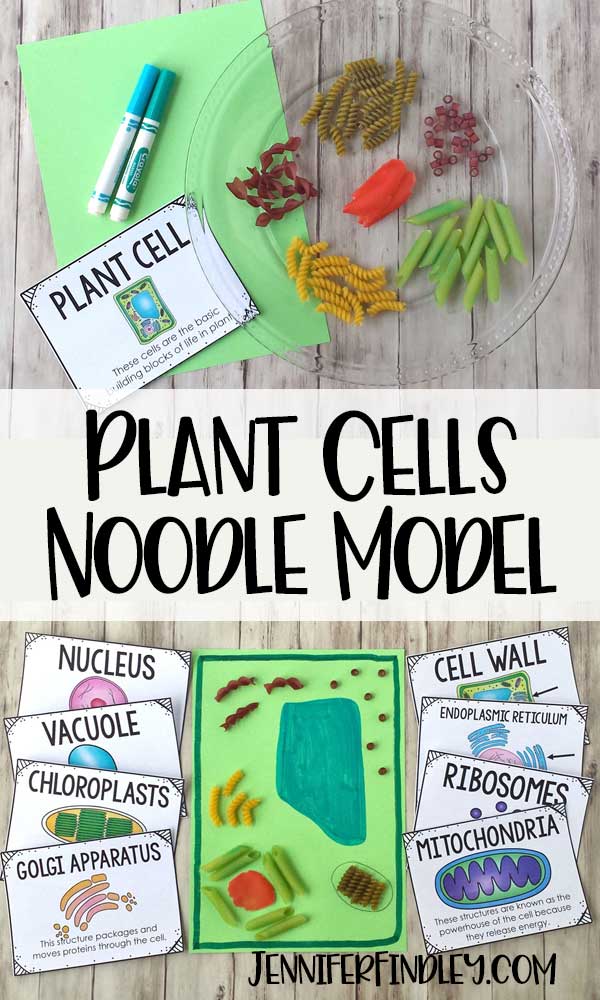
Plant Cell Model Materials
Here are some suggested materials to have students make plant cell models. Feel free to substitute these with any other materials you may have on hand that represent the organelle well.
• green cardsock
• green and blue markers, colored pencils, or crayons (and a black marker if you choose to make the cell membrane and cell wall stand out from one another more)
• glue
• various noodle shapes (we used jumbo shells, penne, rainbow twirls, egg, and ditalini)
To dye some of your noodles you will also need:
• 3 small bowls
• a spoon
• a strainer
• water
• food coloring
Here is what each material above represents in the plant cell model.
cardstock = cytoplasm
colored border = cell wall and cell membrane
colored shape = vacuole
jumbo shell pasta, dyed red = nucleus
penne pasta, dyed blue = endoplasmic reticulum
yellow rainbow twirl pasta = golgi apparatus
green rainbow twirl pasta = chloroplasts
spiral egg noodles, dyed purple = mitochondria
ditalini pasta, dyed purple = ribosomes
Note: Pair or group your students in groups of 3 or 4 to make a collaborative plant cell model to save on materials and prep time.
Edible Animal Cell Directions
1. Fill 3 small bowls with water.
2. In one bowl, stir in a couple of drops of blue food coloring. Toss in some penne pasta.
Note: If you have the students dye the pasta in class, I recommend you start the activity, get all of the noodles dyed, and then start another activity to wait for the noodles to be dyed.
3. In another bowl, stir in a couple of drops of red food coloring. Toss in a jumbo shell.
4. In the third bowl, stir in a couple of drops of both blue and red food coloring to make purple. Toss in some spiral egg noodles and some ditalini pasta.
5. Let the pasta soak for about 20 minutes. This is long enough for the dye to absorb, but not long enough for the pasta to get soggy. If your pasta does get soggy, you can leave it out to dry for a few hours.
6. With a green marker, draw a thick border around your cardstock. This is the cell’s outer layers: the cell wall and the cell membrane (the other side).
Note: Another option to differentiate the cell membrane and cell wall better is use two shades of green (dark and a little lighter) or use a small black marker to trace the cell wall.
7. With a blue marker, draw a rectangular shape in the center to resemble the vacuole.
8. Glue a red, jumbo shell to the cardstock. This is the nucleus.
9. Glue several blue penne pasta pieces around the nucleus to represent the endoplasmic reticulum.
10. Glue several pieces of yellow rainbow twirl pasta onto the cardstock to resemble golgi apparatus.
11. Glue several pieces of green rainbow twirl pasta onto the cardstock. This is the chloroplasts.
12. Glue several pieces of purple egg noodles yellow onto the cardstock. This is the mitochondria.
13. Glue several small ditalini pasta onto the cardstock to represent ribosomes.
And there you have it! I love this plant cell activity because it is a super easy way (with prep but easy to have students do in a calm way) to help review plant cell organelles and their functions that all of the students will eagerly participate in.
Possible Extension Activities
1. This one is a good model to have students label the parts on the actual model. I would recommend making sure the items are completely dried (maybe over night) before students label or have them label before gluing.
2. Have students sketch and label a model of their plant cell, use their noodle models as a guide or support. This would make a great addition to a science interactive notebook.
3. Have students present their plant cell models and explain the function of each organelle. They can do this in groups to be more realistic with time constraints. To support students, you can allow the use of the plant and animal cell vocabulary cards to help them present.
More Resources for Teaching Cells
Free Plant and Animal Cell Posters
This plant cell model activity pairs perfectly with these FREE plant and animal cell vocabulary posters. Click here to grab these plant and animal cell posters in my TPT store.
Plant and Animal Cell Videos
Plant and Animal Cell No Prep Printables
Need a few resources to supplement your curriculum or textbook? Check out this no prep plant and animal cells resource in my TpT store.
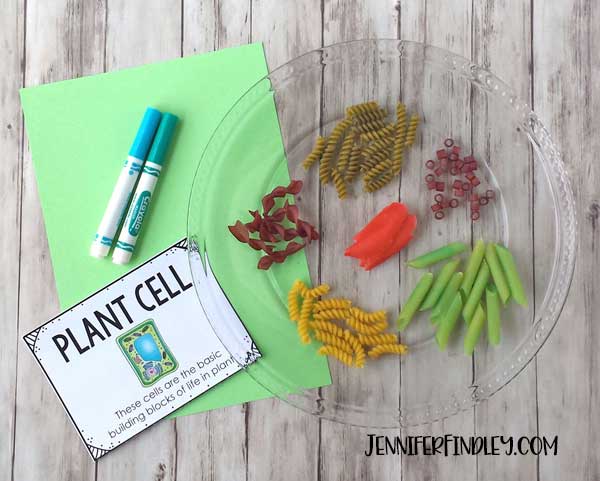

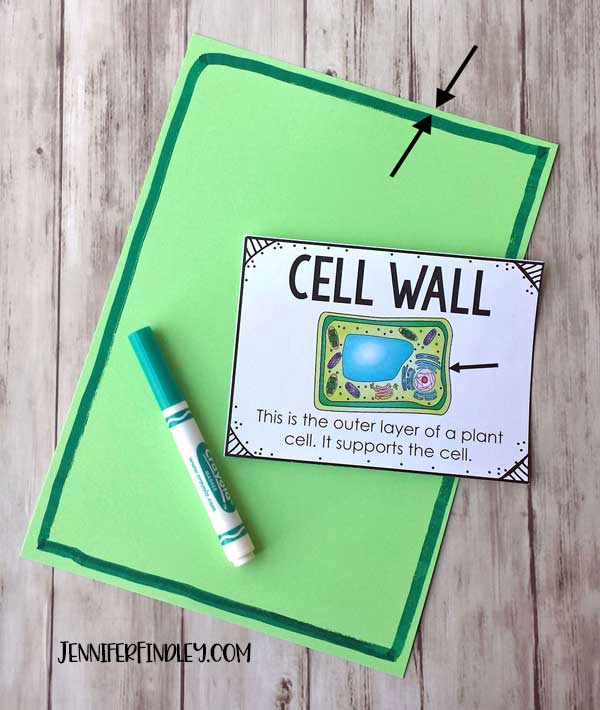

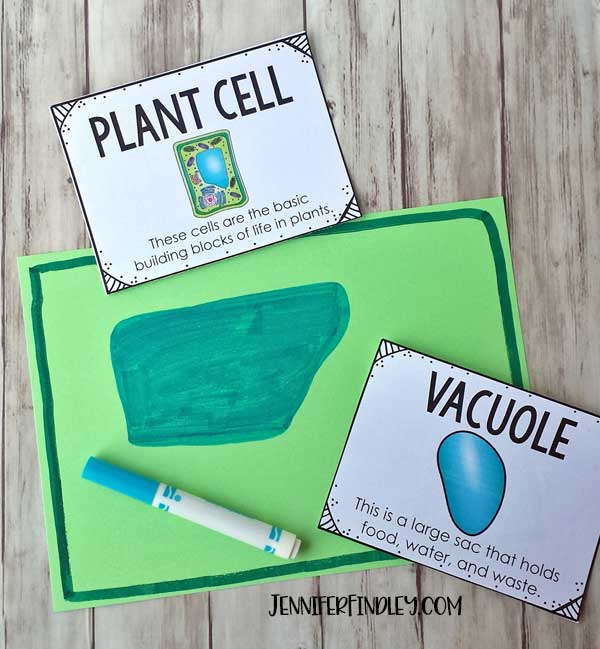
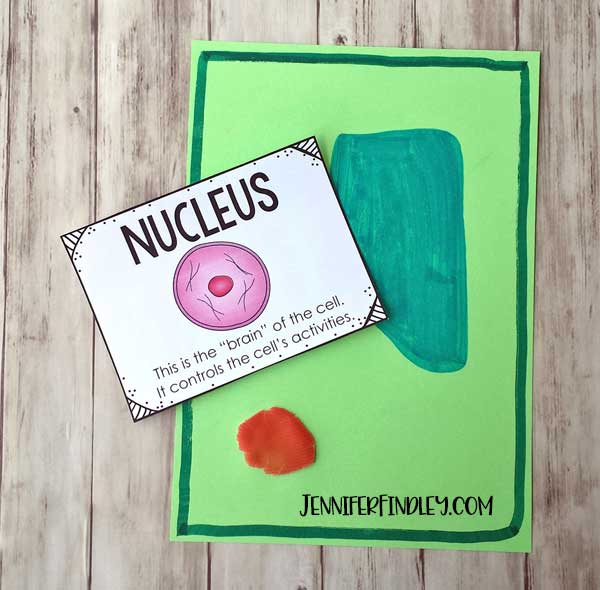
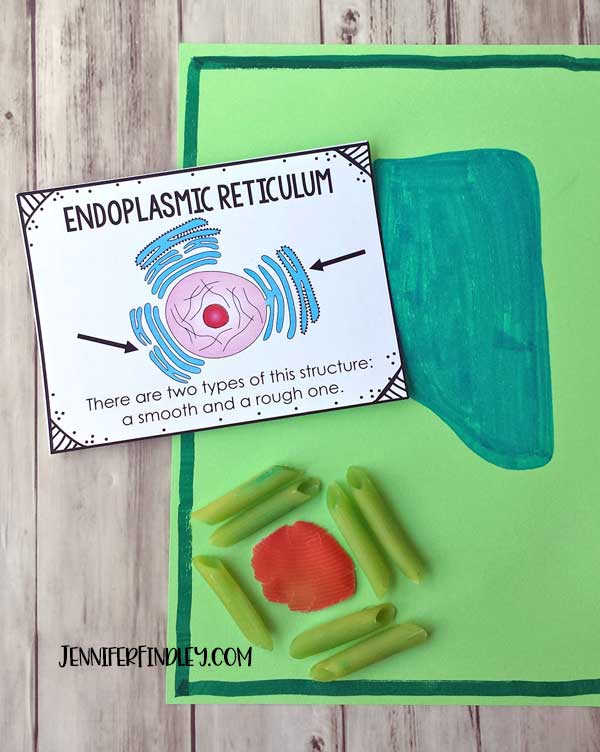
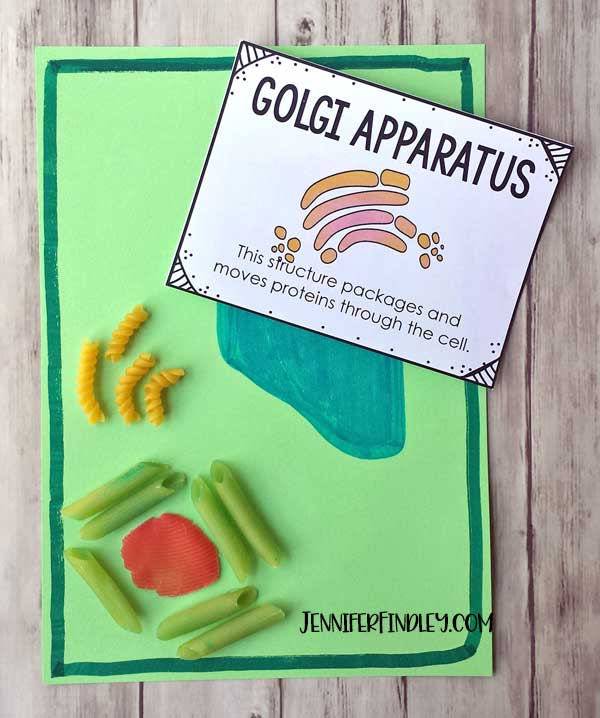
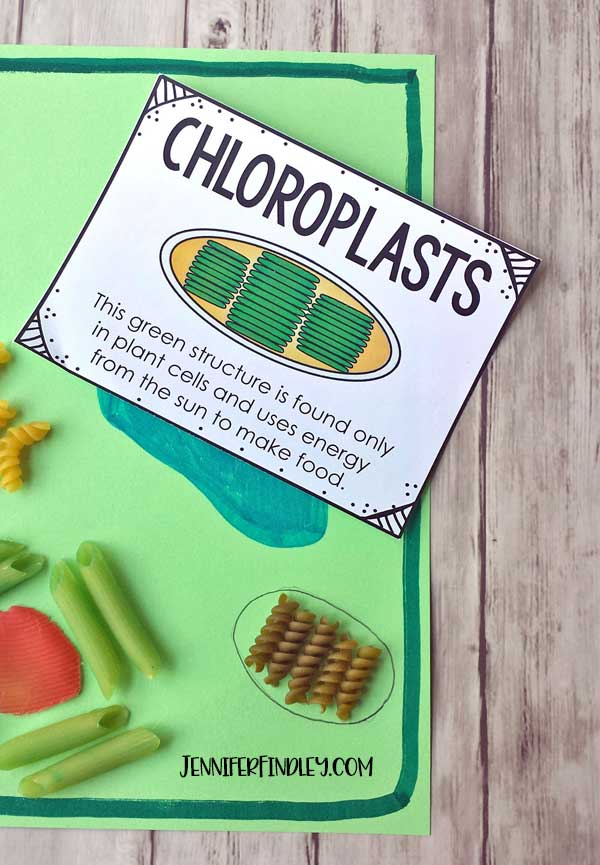
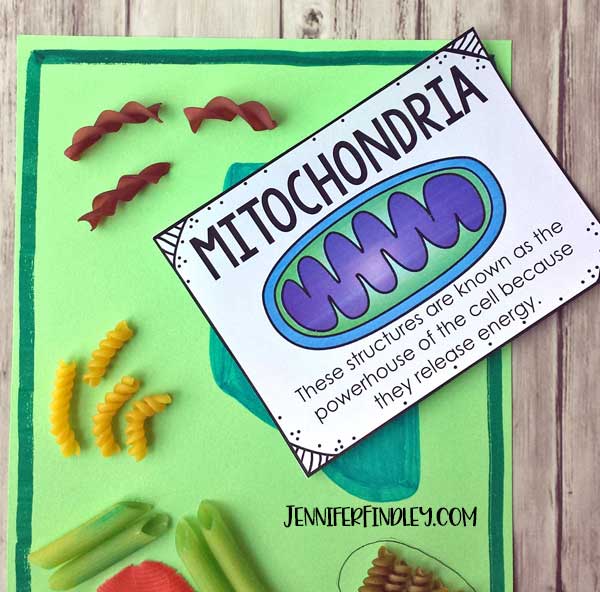

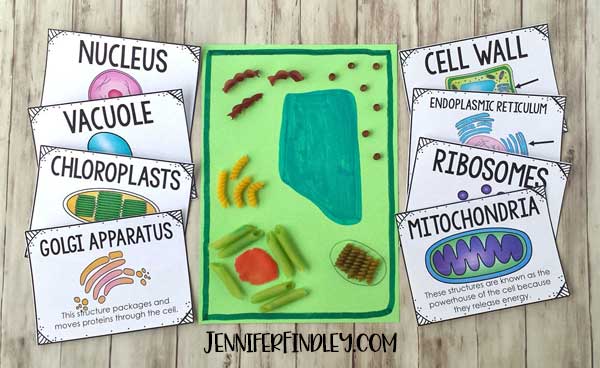


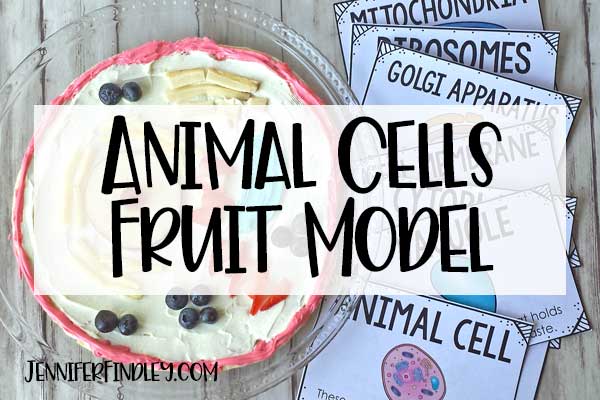






Leave a Comment